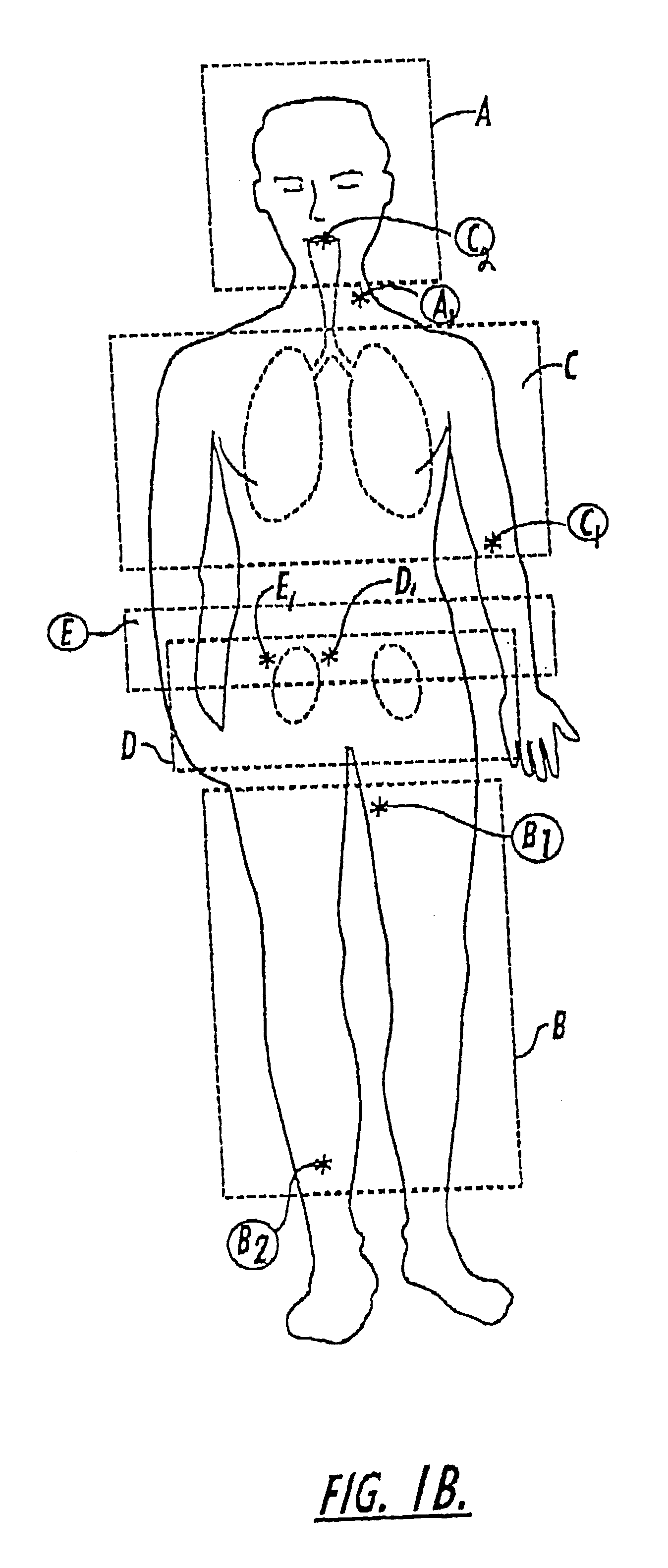Diagnostic procedures using direct injection of gaseous hyperpolarized 129Xe and associated systems and products
a technology of hyperpolarized 129xe and direct injection, which is applied in the direction of magnetic variable regulation, instruments, applications, etc., can solve the problems of large quantities, inconvenient delivery of a sufficient dose to more distant areas, and inconvenient use of the method
- Summary
- Abstract
- Description
- Claims
- Application Information
AI Technical Summary
Benefits of technology
Problems solved by technology
Method used
Image
Examples
examples
FIGS. 10A-10P are graphs of NMR spectra obtained about every 0.5 seconds with a 20 degree excitation pulse via a whole body imager based on about a 3 cc polarized .sup.129 Xe gas injection into the vein of a rabbit (total of elapsed time from FIG. 10A to 10P being about 8 seconds). The rabbit survived the experiment. The graphs illustrate that the gas remained substantially in the gas phase (substantially non-dissolved or insoluble in the bloodstream as it traveled through the bloodstream during the image acquisition). The signal strength at 8 seconds (FIG. 10P) being about 0.65 that of the original signal (FIG. 10A). The rabbit was placed in a whole body imager so that the exact location of the signal within the rabbit's body is not disclosed in the spectra. It is noted that a large quantity of the injected gas remained in the gas phase upon injection, most likely due to the size of the lumen used, about 0.5 mm.
It is also notable that the T.sub.1 of the gas in the blood is relative...
PUM
 Login to View More
Login to View More Abstract
Description
Claims
Application Information
 Login to View More
Login to View More - R&D
- Intellectual Property
- Life Sciences
- Materials
- Tech Scout
- Unparalleled Data Quality
- Higher Quality Content
- 60% Fewer Hallucinations
Browse by: Latest US Patents, China's latest patents, Technical Efficacy Thesaurus, Application Domain, Technology Topic, Popular Technical Reports.
© 2025 PatSnap. All rights reserved.Legal|Privacy policy|Modern Slavery Act Transparency Statement|Sitemap|About US| Contact US: help@patsnap.com



